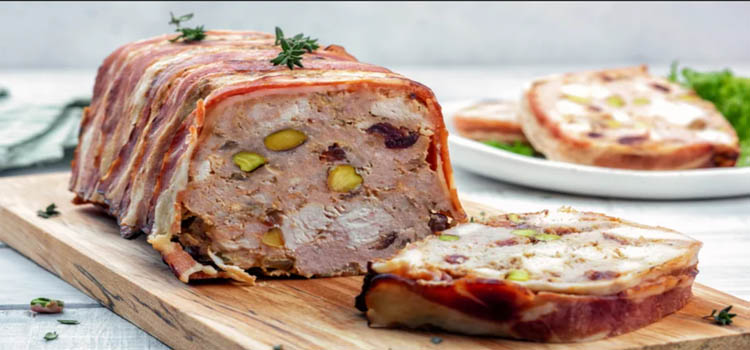If you’ve ever seen the two dishes side by side, you might be wondering what the difference is between a pâté and a terrine. Are they cooked differently? Do they use different meats, or does one contain an additional ingredient that the other lacks? Not always. In fact, the difference between these two classic French dishes lies primarily in the shape.
Pâté and terrine are both a type of stuffing: minced meat mixed with fat, seasonings, and other ingredients. The meat for pâté can be baked, pan-fried, or boiled in a bain-marie. A spreadable pâté, such as a duck liver pâté, is blended to a smooth, spreadable consistency, then transferred to a casserole dish or jar and served chilled.
A terrine is a type of pâté baked in a deep rectangular dish, also called a loaf pan. Once removed from the dish, it takes the shape of a loaf. terrines that is Oven-baked have firmer consistency & be served sliced.
How pate and terrine are prepared

Pâté is usually made from pork, the most widely consumed meat in the world, but it can also be made from beef, poultry, or seafood. it texture depending on ingredients. For example, it can be thicker without emulsifying ingredients like eggs or cream. Liver, particular, pâté thanks its unique flavour & high fat content, smooth, texture.
Terrine always served cold & used top bread & crackers. Like pâté à la spread, it is often featured on a charcuterie board. Since terrine is only one particular form of pâté, its texture and flavour also vary depending on the ingredients.
A very common method of preparing pâté and terrine is to fill them with pastry. The meat basically baked in oven, resulting in a kind of meat pie. Prepared this way, it is called pâté en croȗte or terrine en croȗte. Unlike classic pâté or terrine, pâté en croȗte can be served on its own, but it is ideal on a charcuterie board. If you are adding pâté to a charcuterie board, keep in mind good presentation practices and multiply the options using the rule of three.
